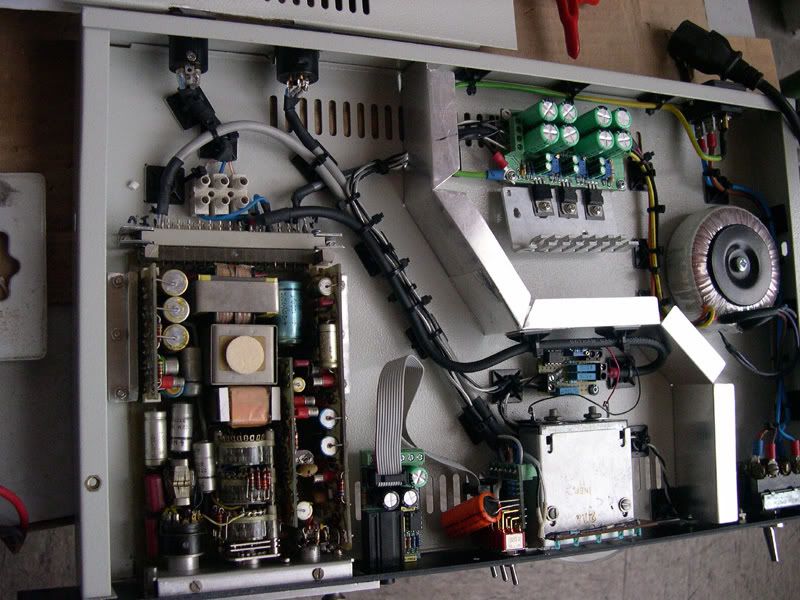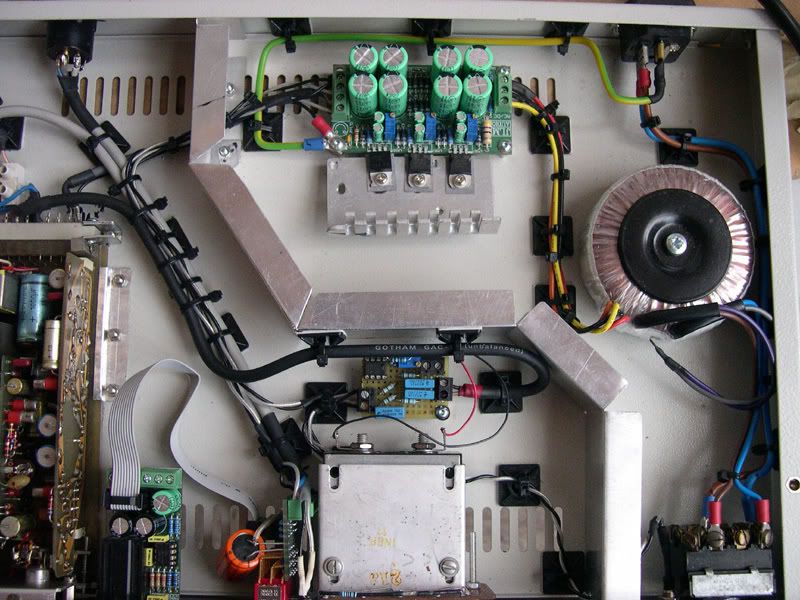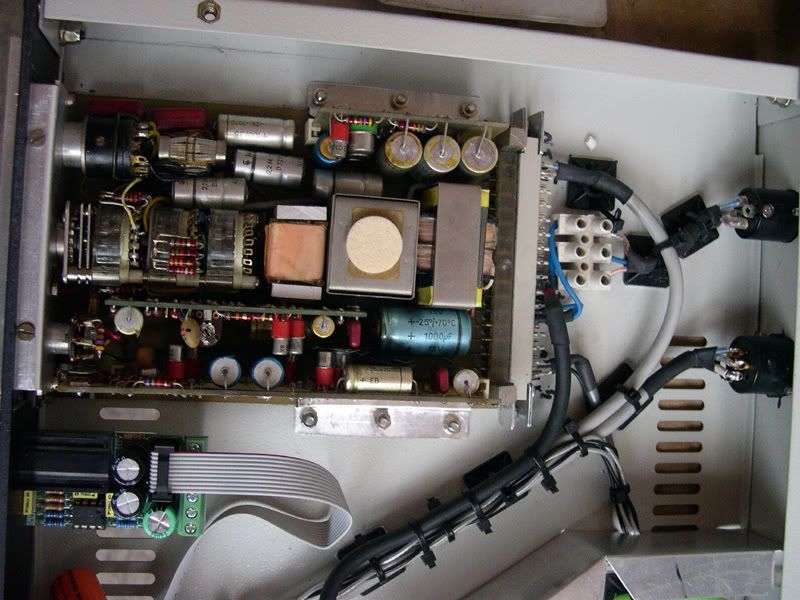Hi all! I just finished it. It took me long time by the lack of money for it... But now its "finished".
I put it with JLM kits, DI, psu and the mic between one. I put too a buffer circuit to feed a VU meter. The vu meter is not nesesary because I usually must see the levels on DAW to see if they clip or not. Anyway I put the vu because I have it, there are a lot of free space and want to try it
It sounds nice to me, but I cant compare it with other pres, I only have the ones on my mci-JH618 desk at the moment.




The problem is that it seems to run ok but every certain time the pre gives me some pops and noise, the audio signal disapears during these short noises (3 or 4 seconds) and next, audio raises again to normal level in 2 or 3 seconds. It seems like static discharges, but I dont know if the problem is the v376 pre or something wrong outside it or in wiring.
Another question is that I joined the 22 and 23 pins (output trafo center connections). I put them both to XLR output pin 1. Is that correct? I haventt connected it to ground, to leave it floating, but Im not sure about if that its ok or not or if I need to put a resistor or something else there...
On the JLM PSU there are separated locations to put GND and to put 0V, separed with a low value resistor and a capacitor in paralel. I only used GND connection on PSU connecting it to chasis, IEC gnd, and pin 30 on V376 (chasis pin). Is that ok?
Well... I'm happy with that pre but I cant use it with non confidence people, only for my projects... until I can repair noise issues...
Well, thanks all you guys for your continuous work here, in that forum
:thumb:
Arnau
I put it with JLM kits, DI, psu and the mic between one. I put too a buffer circuit to feed a VU meter. The vu meter is not nesesary because I usually must see the levels on DAW to see if they clip or not. Anyway I put the vu because I have it, there are a lot of free space and want to try it
It sounds nice to me, but I cant compare it with other pres, I only have the ones on my mci-JH618 desk at the moment.




The problem is that it seems to run ok but every certain time the pre gives me some pops and noise, the audio signal disapears during these short noises (3 or 4 seconds) and next, audio raises again to normal level in 2 or 3 seconds. It seems like static discharges, but I dont know if the problem is the v376 pre or something wrong outside it or in wiring.
Another question is that I joined the 22 and 23 pins (output trafo center connections). I put them both to XLR output pin 1. Is that correct? I haventt connected it to ground, to leave it floating, but Im not sure about if that its ok or not or if I need to put a resistor or something else there...
On the JLM PSU there are separated locations to put GND and to put 0V, separed with a low value resistor and a capacitor in paralel. I only used GND connection on PSU connecting it to chasis, IEC gnd, and pin 30 on V376 (chasis pin). Is that ok?
Well... I'm happy with that pre but I cant use it with non confidence people, only for my projects... until I can repair noise issues...
Well, thanks all you guys for your continuous work here, in that forum
:thumb:
Arnau

































